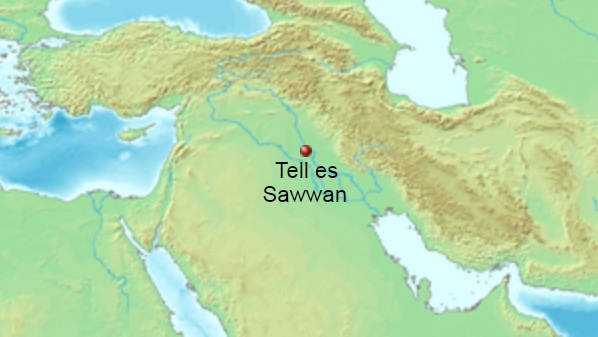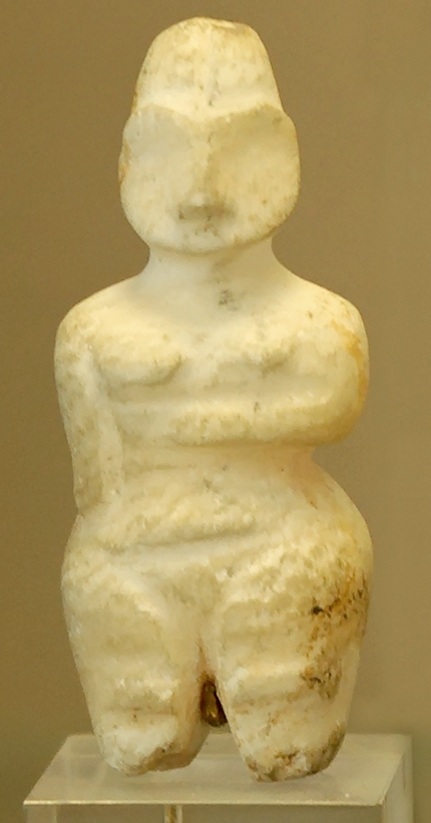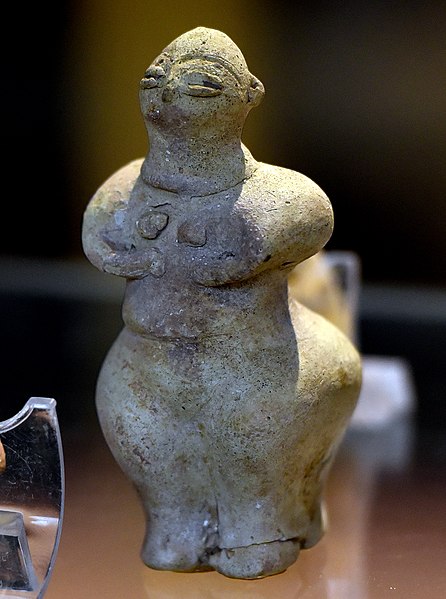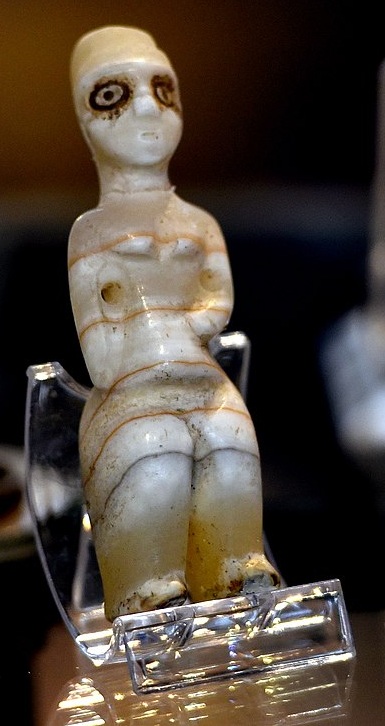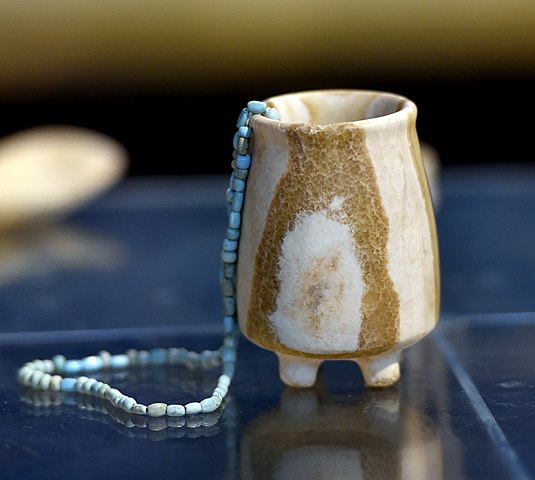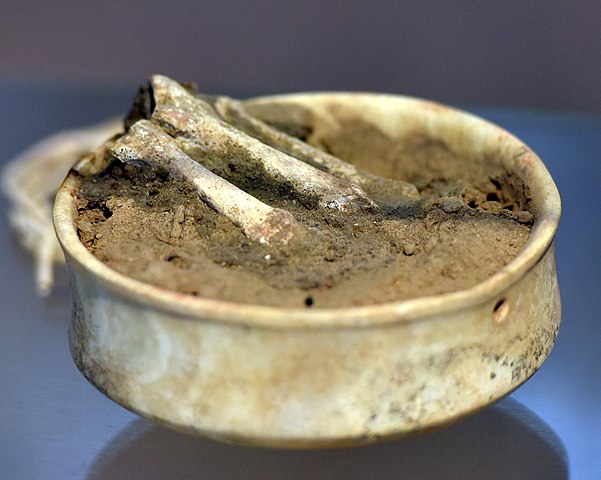
| TELL ES-SAWWAN
Tell es Sawwan location in Iraq Tell es-Sawwan is an important Samarran period archaeological site in Saladin Province, Iraq. It is located 110 kilometres (68 mi) north of Baghdad, and south of Samarra.
The site is a primarily Ubaid, Hassuna, and Samarra culture occupation with some later Babylonian graves. It is considered the type site for the Samarran culture.
Tell
es-Sawwan and its environment :
The inhabitants of Tell es-Sawwan were farmers who used irrigation from the Tigris to support their crops, as rainfall was unreliable. They used stone and flint tools similar to those of the Hassuna culture. Their prosperity, probably based on the dependability of irrigated crops, is evidenced by the presence of fine Samarran ware and beautiful, translucent marble vessels.
Underfloor graves of adults and children contained terracotta and alabaster statuettes of women and men, in various poses; some of these had the eyes and pointed heads typical of the Ubaid period.
History
of research :
Gallery :
Female figurine from Tell es-Sawwan, Louvre Museum
Mother goddess from Tell es-Sawwan, Iraq, 6000 - 5800 BCE. Iraq Museum
Mother goddess figurine from Tell es-Sawwan, Iraq, 6000 - 5800 BCE. Iraq Museum
Alabaster jar with a necklace from Tell es-Sawwan, Iraq. 6000 - 5800 BCE. Iraq Museum
Bowl with human bones from Tell es-Sawwan, Iraq, 6000 - 5800 BCE. Iraq Museum
Source :
https://en.wikipedia.org/ |
